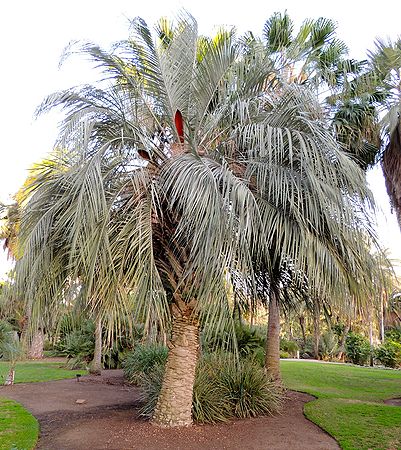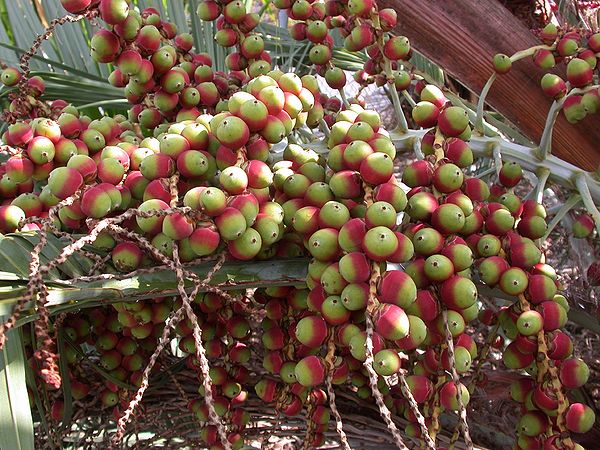Pronunciation: BOO-tee-uh oh-door-AHH-tuh
Common Name: Jelly Palm, Pindo Palm
Butia odorata is now the proper name for one of the best known palms in California, what was Butia capitata. Changing such a familiar name is tough as almost the whole world knows this palm as capitata, and odorata is a 'smelly' sounded substitute. But Noblick has made it official in 2015 so we should all probably just start getting used to it. This species is probably the hardiest of all the pinnate palms, and a great palm for just about any area of California. This is both a common landscape palm as well as a back yard palm. And it is one of the easiest palms to grow and transplant. The fruit is not only edible but very good (though large variability in flavor from palm to palm). Jelly is often made from the fruit (hence the common name). Butia odorata is often hybridized with Queen palm (Syagrus romanzoffiana) and Jubaea chilensis (Chilean Wine Palm), and sometimes with the Parajubaeas. All resulting hybrids are pretty tough and sought out for palms all throughout California.
Synonym: Butia capitata, Butia bonnetii (basically a green-leaf version)
|
Appearance and Biology
- Habit: Solitary with a crown of 30-50 leaves
- Height: 20'
- Trunk: single 18" thick; clean with age, but initially covered with retained unsplit retained leaf bases
- Crownshaft: none
- Spread: 8'-12'
- Leaf Description: pinnate; 7'-10'; arching/recurved with upright but flopping leaflets- older leaves all leaflets drop even from petiolar attachment; leaves vary from dull, pale green to sea green, to blue green to grey
- Petiole: 2' long and armed with flattened, jagged edges along petiolar length; somewhat channeled and smooth; unsplit leaf bases on trunk
- Reproduction: monoecious; germination a bit tricky sometimes
- Inflorescence: 3'-4' long with pale yellow to purplish red flowers
- Fruit: 2-3cm and round; green to yellow to orange with ripe
- Seed: 1.5cm spherical pale brown
|
Horticultural Characteristics
- Minimum Temp: 15F
- Drought Tolerance: good
- Dry Heat Tolerance: very good
- Cool Tolerance: very good
- Wind Tolerance: good
- Salt Tolerance: low
- Growth Rate: slow to moderate with maturity
- Soil Preference: any (extremely adaptable)
- Light Requirement: full sun (preferable) to partial sun
- Human Hazards: none known
- Disease or Horticultural Problems: none known
- Transplants?: very good transplanter- one of the best of all palms
- Indoor?: tolerates some high light indoor situations, but not ideal
- Availability: very commonly available
|



























